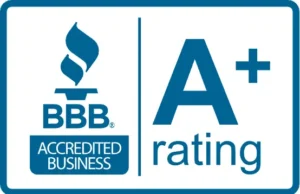Currently, Synchrony offers low monthly payments and many financing options. You can have your home repaired now and pay later with one of Synchrony's six monthly payment programs.
Home elevation has become an increasingly important consideration for residents of Porter, located in Montgomery County, Texas. This specialized construction process involves raising an entire home above its current foundation level to protect against flooding and water damage. As extreme weather events become more frequent in the Houston metropolitan area, homeowners in Porter are turning to professional elevation services to safeguard their properties and families.
Porter’s location in Montgomery County places it within a region that has experienced significant flooding events in recent years. The area’s proximity to Lake Conroe and various waterways, combined with heavy rainfall patterns typical of Southeast Texas, creates conditions where traditional foundation levels may no longer provide adequate protection. Furthermore, updated flood zone maps and insurance requirements have prompted many homeowners to consider elevation as a proactive solution.
Additionally, the Federal Emergency Management Agency (FEMA) flood maps continue to evolve, and properties that were once considered low-risk may now fall within designated flood zones. This shift has made home elevation not just a protective measure, but often a financial necessity for maintaining reasonable flood insurance premiums.
Professional home elevation involves several critical steps that require expertise and specialized equipment. Initially, structural engineers assess the existing foundation and determine the most appropriate elevation method for the specific home type. The process typically begins with disconnecting utilities and preparing the structure for lifting.
Next, hydraulic jacks carefully raise the entire home to the desired height, ensuring structural integrity throughout the process. Once elevated, contractors install new foundation elements, whether concrete block, poured concrete, or engineered systems designed to meet current building codes and flood resistance standards. Finally, utilities are reconnected, and any necessary modifications to steps, driveways, and landscaping are completed.
While flood protection remains the primary motivation for home elevation in Porter, Montgomery County residents often discover additional advantages. Elevated homes typically experience improved air circulation and reduced humidity issues, which can enhance indoor air quality and reduce mold concerns. Moreover, the additional space created beneath an elevated home can provide valuable storage or recreational areas.
Property values in Montgomery County often reflect the added protection and peace of mind that comes with proper elevation. Homes that meet or exceed current flood protection standards tend to be more attractive to potential buyers and may qualify for reduced flood insurance premiums through the National Flood Insurance Program.
Selecting the right contractor for home elevation in Porter requires careful consideration of experience, licensing, and specialization in residential projects. Allied Foundation focuses exclusively on residential services, ensuring that homeowners receive specialized attention for their unique needs rather than competing with commercial projects for resources and expertise. This residential focus allows for better understanding of local building codes, homeowner concerns, and the specific challenges faced by Montgomery County residents seeking to protect their homes through professional elevation services.
Proudly Serving Porter for over 40 years!


